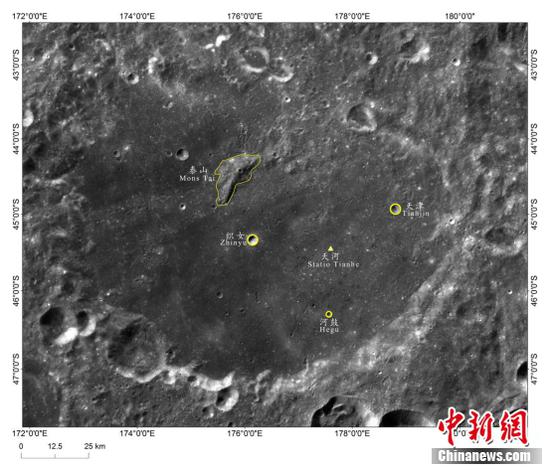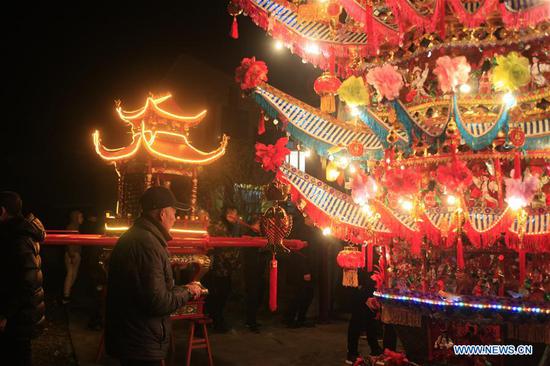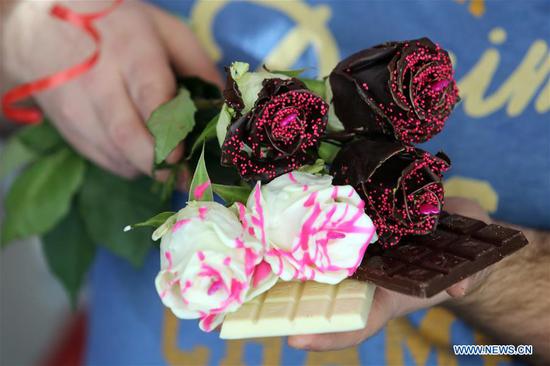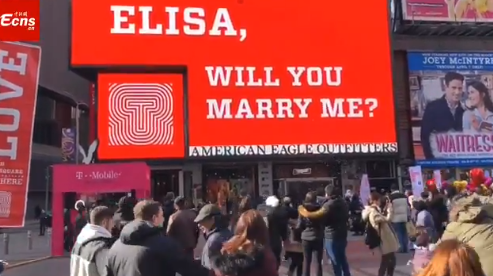
Performers stage a dragon dance to celebrate Spring Festival as the Golden State Warriors hosts Philadelphia 76ers in Oakland, the United States, on Feb 1. (Photo/Xinhua)
From NBA teams to luxury brands, American industries are sparing no efforts in cashing in on the holiday season of the Chinese Lunar New Year, which began on Feb 5, to reach out to China's exploding market for the middle-income group.
As a colorful annual festivity, the celebrations of the Chinese New Year, or Spring Festival, will continue through Tuesday.
This year's holiday season, in particular, is a natural promotion opportunity for global businesses because it is the Year of the Pig in Chinese zodiac which represents good fortune and wealth.
NBA clubs have been celebrating the Chinese New Year since Jan 30 with a record 15 league teams hosting in-arena activities and 65 games broadcast live in China.
In its game against the Philadelphia 76ers in Oakland, California, the 2018 NBA champion Golden State Warriors wore specially designed jerseys featuring elements of Chinese culture, such as the Chinese characters for "warrior".
The Warriors, an NBA basketball team popular in China, became the first such outfit ever to wear Chinese New Year-themed jersey in 2015.
The Cleveland Cavaliers, another popular NBA team in China, hosted a Chinese New Year celebration during their game against the Boston Celtics. The Quicken Loans arena was decked out in red and gold, and a Chinese acrobatics duo took to the court to perform at halftime.
The New York Knicks also staged a China Night as the team took on the Detroit Pistons in New York City, highlighting the Lunar New Year with various in-game elements, merchandise and cultural presentations. It was the second time that the Knicks has celebrated Chinese Lunar New Year since 2018.
In its eighth year of the Chinese New Year celebration, the NBA league launched three television promotional spots featuring NBA stars Klay Thompson of Golden State, Damian Lillard of Portland and Giannis Antetokounmpo of Milwaukee, as well as Chinese singer Cai Xukun, the NBA Chinese New Year Celebration Brand Ambassador.
The NBA celebrations are an example of how the league aims to tap into the growing sports consumer market in the world's most populous country.
China is the largest overseas market of NBA, which has the most followers on China's social media platforms as a sports league and the largest merchandise sales.
The NBA's investment in China is also growing, with over 200 lifestyle apparel stores, three NBA play zones, and three basketball academies established in China so far.
NBA Deputy Commissioner Mark Tatum, in a Forbes interview in 2018, disclosed that the valuation of NBA China was over $4 billion. The NBA's five-year deal with China's internet giant Tencent for the latter to broadcast NBA games and other content on its digital platforms since 2015 was to the tune of $700 million.
Interestingly, the NFL joined their basketball counterparts in marking the Year of the Pig, using players to deliver Mandarin messages amid dragon dancers while plugging Super Bowl LIII which handily falls in the Chinese New Year holiday.
There are more than 19 million people interested in the NFL in China, a fanbase that has grown 1,087 percent in the past five years, Kantar-CSM China research showed in a 2017 report.
As usual, US luxury brands, which boast huge following in China, are all on board for the Chinese New Year, offering product lines and marketing campaigns that draw inspiration from China's cultural traditions and zodiac animals.
The New York City-based makeup manufacturer Estee Lauder rolled out a limited-edition Year of Pig powder compact, which is adorned with pink stones.
Coach unveiled pig-themed bags and accessories and teamed up with China's most popular social media platform WeChat in selling the new product line.
Nike has issued a limited edition Chinese New Year collection of shoes that unifies patterns symbolic of all 12 Chinese zodiac animals.
With a potential consumer base of 1.4 billion and a middle-income population of some 400 million, the China market is among the most desired destinations for foreign goods and services.
China represents "32 percent of the global luxury consumption", according to a report by global consultancy Bain &Co.
On the occasion of the Lunar New Year, US metropolises, too, have been on a charm offensive to woo Chinese tourists.
In New York City, Spring Festival has become a public holiday. Music concerts, parades, traditional Chinese performances, gala and other celebration activities are being held throughout this month.
For the 19th consecutive year, New York City's 443-meter skyscraper Empire State Building glowed red, blue and yellow on Feb 4 and Feb 5 in honor of the Chinese New Year.
A Chinese New Year concert jointly presented by Chinese musicians and their US counterparts in Philadelphia, Pennsylvania, attracted some 2,000-strong audience.
The city of Chicago prepared over 20 Chinese New Year activities this year as a reward to increasing visitors from China and it is the first US city celebrating the Chinese New Year in the name of city government.
Over 1.1 million Chinese travelers visited New York City, some 250,000 Chinese visitors arrived at Chicago, and a record 1.2 million Chinese were welcomed by Los Angeles last year, statistics show.
Chinese travelers, particularly those venturing overseas, tend to enjoy quality travel experiences during the Lunar New Year holiday, said Chinese online travel agency Ctrip in a report released in January.
Timothy Taylor, managing editor of the Journal of Economic Perspectives, said in his blog that since international tourism is counted as an export industry in the official economic statistics, US export of goods and services to Chinese tourists in the US is actually the US industry with the largest exports to China.


















































